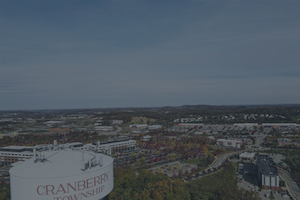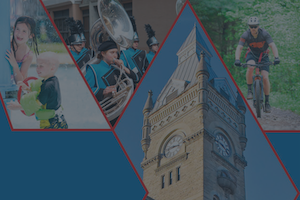Mental health concerns lingering long after COVID-19 shutdowns
Five years after COVID-19 brought the world to a screeching halt, the long-lasting effects on mental health remain evident throughout local communities.
“We’re no longer in a pandemic, but the fallout from the pandemic is still being dealt with,” said Brandon Savochka, Center for Community Resources CEO regarding the pandemic’s impact.
Varying degrees of fear, health concerns and political unrest took a significant toll on many Americans, including those in Butler County. Throw in limited human contact, potential job losses and travel restrictions and it was the perfect storm to exasperate what already was an ongoing problem.
“People weren’t getting their mental health needs met during the early stages of the pandemic,” Savochka said. “When they started to seek out services again, what we saw were people that just had higher levels of acuity.”
Feelings of anxiety, depression and exhaustion were prevalent as people dealt with new, complex realities.
According to a 2022 news release from the World Health Organization, global prevalence of anxiety and depression increased by 25% in the first year of the pandemic.
“People were not OK,” said Sarah Wagner, a licensed counselor and owner of Balanced Mind, a local counseling service. “They had all of the responsibilities, like still having to go to work and doing the things they had to do, but couldn’t do any of the fun stuff.”
Butler County’s 24-hour crisis phone line received 12,125 calls for the year 2020. The year after in 2021, that number ticked up to 14,278, per data provided from the county’s mental health department.
It’s been less than that every year since, with 13,330 calls in 2022, 13,523 in 2023 and 13,647 in 2024.
Similarly, according to county officials, the number of suicides from 2016 to 2023 was at its highest with 37 in 2021. That was up from 24 suicides in 2020, although there’s no defining trend based on what happened after the pandemic ended.
There were 19 suicides in 2022, but went back up to 35 in 2023. Numbers for 2024 were not yet immediately available.
Much of the counseling services that were provided during 2020 and 2021 were done virtually in an effort to mitigate health risks.
While more people may have needed help during those years, Wagner says there was a lack of suitable counseling options due to some of the restrictions.
“During COVID, a lot of practitioners stopped seeing people,” she said. “I think that there was less availability and more people looking. We had a waitlist. I know a lot of people were putting their name on every waitlist just hoping whoever called back first was going to be a good fit.”
Unfortunately, pandemic shutdowns also steered some people toward substance abuse, which opened up a host of other problems for local support organizations.
“Mental health and substance abuse are a lot of times going hand in hand,” Savochka said. “It’s a ‘which came first’ type of deal, whether it’s the mental health issues or substance abuse. A large portion of the people that we’re seeing now have needs in both areas.”
A number of those issues have carried over more than a half decade later. In fact, according to Savochka, some people may be in a worse position than they were when the pandemic began.
“You’re definitely seeing people that have much more complex mental health needs now than what they did prior to the pandemic,” he said. “They also have higher levels of needs.”
Still, Savochka says local employees all over the county performed crucial roles at a time when the world was seemingly falling apart.
“All the organizations across Butler County stepped up to meet the needs of the community,” he said.
While many health-related concerns surrounding the pandemic have subsided, the shutdowns sent the economy into a whirlwind and deflated the pockets of American consumers. Rising inflation and an ongoing affordability crisis and a cycle of uncertainty, echo similar struggles that were persistent throughout 2020.
“People are stressed all the time,” Wagner said. “The sources change every so often and they evolve, but I don’t know that it’s wildly different now than before.”
More coverage of how the pandemic impacted Butler County is available here.









